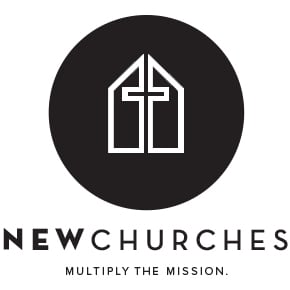Home > Blog > One Step Your Church Should Accomplish Before Looking Ahead
One Step Your Church Should Accomplish Before Looking Ahead
By Todd Adkins

In my early days of ministry, you would have found me guilty of viewing the people of our congregation as vessels to be filled instead of torches to be lit. May that never be said again of me or you as a church leader.
But today, we have a tremendous opportunity to build an army, not just an audience, in the wake of COVID-19, but it will not be easy.
The greatest obstacle that stands in our way of emerging from this crisis with a stronger church body faithfully engaged in using their gifts in service to Christ is clarity in the midst of chaos.
Every leader is leading through the uncertainty of the day but can’t afford to allow that lack of certainty to manifest itself and become a lack of clarity.
Your staff and congregation will follow you through uncertainty, but they can’t follow you if you’re unclear about where your church is going and where they fit into the process.
Remember, there are often more people ready to volunteer, serve, and sacrifice in crisis times. But we need to be sure we’re clear and compelling when we ask them to do so.
We will need to consider new or modified strategies, structures, systems, and skills as we adjust our ministry programming and practices to reopen our churches and find a new normal.
It is easy to stay in the denial stage and avoid addressing how this will change existing volunteer roles and add new roles to the table, but that is what we must do as church leaders.
When I look at the latest statistics from the Centers for Disease Control and Prevention (CDC), I don’t like what I see for many of our churches.
The data from the CDC shows that 91% of deaths related to COVID-19 have occurred among people who are 55 or older.
Consider how many of your leaders and volunteers are in that age bracket and add that number to those who are considered as vulnerable populations.
This also includes individuals with serious underlying health conditions, including high blood pressure, chronic lung disease, diabetes, obesity, asthma, and those whose immune systems are compromised.
In many churches, this means that over half of their volunteers and leaders are at risk.
There are also plenty of people who don’t fall into one of those categories but live with someone who does, and they want to opt out of serving as well.
This means we will have to recruit, vet, onboard, and train a new army of church volunteers and leaders quickly.
Perhaps the most undervalued and underused tool that we have at our disposal is a clean and clear role profile.
A strong role profile should give a brief summary of the role, how it relates to your church’s vision, and a list of key competencies, responsibilities, and requirements.
Role profiles are important not only for staff but for volunteers and leaders as well.
There are multiple benefits for doing this work in advance. Role profiles:
- Assist in making sure the duties of the role align with your church’s vision and set boundaries.
- Allow you to further delegate authority and placement decisions by developing recruiting strategies that clearly outline the role and the responsibilities.
- Clarify the interview process by providing the foundation of interview questions for the role.
- Can be used to assess competencies and address training and development needs when expectations or requirements are not being met.
- With defined competencies ensure a standardization of responsibility and qualification for the same volunteer levels across the organization.
- Provide clarity for individuals of what they are getting into and ensures they don’t feel dumped on or tricked into something.
- Provide succession planning and ongoing organizational development for your leadership pipeline.
A template for role profiles should be standardized across your church as most of your volunteers and leaders serve in multiple roles. Doing so reduces confusion and frustration.
Also, consider standardizing the competencies and qualifications required for different levels of leadership throughout the organization for similar reasons.
This is especially helpful during a crisis as you can quickly understand the competencies of different volunteers and how they might be able to be redeployed into new or other critical roles.
Some new roles are emerging during this session, so we need new role profiles created. Other profiles may be adaptations of existing roles that need to be adjusted now.
Be sure to get free access to 25 new and adapted critical role profiles for churches during COVID-19.
Source: One Step Your Church Should Accomplish Before Looking Ahead
